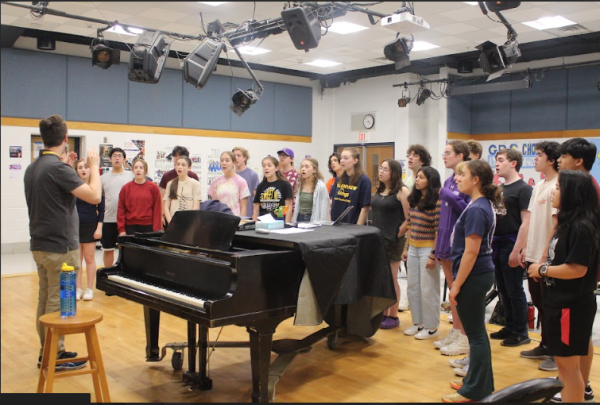The Revenant impresses with stunning imagery, acting
February 5, 2016
There’s no question that director Alejandro González Iñárritu has secured his spot in the non-existent Filmmakers Hall of Fame. With his recent release of The Revenant, Iñárritu continues to solidify his newly-deemed reputation for visually transcending and technically sound cinema. Between last year’s Academy Award for Best Picture, Birdman, and his widely praised triptych of stories–Amores Perros, 21 Grams, and Babel–the 21st century has undoubtedly proven that Iñárritu is one of the most influential cinematic masterminds to ever direct for the widescreen.
The film does not require more than a two-sentence summary, as the plot is inherently simple. The Revenant, also known as “Leonardo DiCaprio’s Continuing Quest For An Oscar”, is the glamorized, true story of Hugh Glass (Leonardo DiCaprio), a 19th century fur trapper who is left to endure a solitary war against nature upon being abandoned in a shallow grave by his fellow frontiersmen. Glass, with a rare yet unmitigated form of determination, willingly treks hundreds of miles through frozen-over Missouri Ozarks with one goal: to seek revenge for the iniquitous murder of his son.
It’s hard to know if it’s a result of the freezing temperatures on set in Argentina and Canada or Iñárritu’s ultra-specific direction, but DiCaprio portrays a man stricken with pain and traumatic memories so deftly that the Academy may be foolish not to grant him a pardon from the cold.
It’s difficult to forget their sportive, on-screen companionship in 2008’s Inception, but the introduction of Tom Hardy as Fitzgerald delivers a masochistic addition to the fuel of Glass’s fuming rage. Fitzgerald’s character is soon revealed as the avaricious fiend who presents unwanted moral and physical challenges for the other fur trappers. Hardy also received a well-deserved nomination for Best Supporting Actor from the Academy, although his performance maintained an equal, and probably overlooked, weight next to DiCaprio’s.
The allure of The Revenant can be attributed to the dramatic cinematography and less to the lackluster adaptation of one man’s inconceivable journey through hell and back. That being said, cinematographer Emmanuel Lubezki showcases his familiar, gliding camera movements from Gravity and wide-angled close-ups from Birdman that trick the audience (including myself) into thinking we’re closer to the characters and the strained breath of DiCaprio on the camera lens than we actually are. Cinematography is a true art form, and Lubezki is one more Academy Award nomination away from the complete mastery of it.
In truth, the film would serve as just another historical representation of post-Revolutionary War events if not for the way the shots literally immerse us in bloody battle scenes, transport us to the unpredictability of frozen lakes and challenge our memory to remind us that we are not actually there. It does, at some points, make us forget that we are staring at a screen and not a window into the horror of mass genocides.
Transitioning from technique to the textbook, one historically thought-provoking aspect of the film is the artful incorporation of Native Americans: a once ubiquitous culture that eventually vanished. It is humbling to watch these native inhabitants, people whose lives and values were disregarded following outside invasions, eventually protect and encourage Glass on his arduous road to redemption. But from their teepees to their clothing and their dialects to their mannerisms, Iñárritu’s well-accomplished goal was to achieve a historical authenticity unrivaled by any other film of its kind.
The fact of the matter is that The Revenant is not for every audience so much as fellow Best Picture nominees Spotlight or The Martian. If you’re not fond of viscera with an extra order of it too, then you may want to wait to eat until after the 156-minute run-time is up. Iñárritu’s gory demonstrations reflect how far one man will go to survive the reality of brutality deeply-rooted in nature. It’s a visual masterpiece more than anything, and witnessing this cinematic experiment is an engrossing experience more than any Wes Anderson and Guillermo del Toro film combined.














